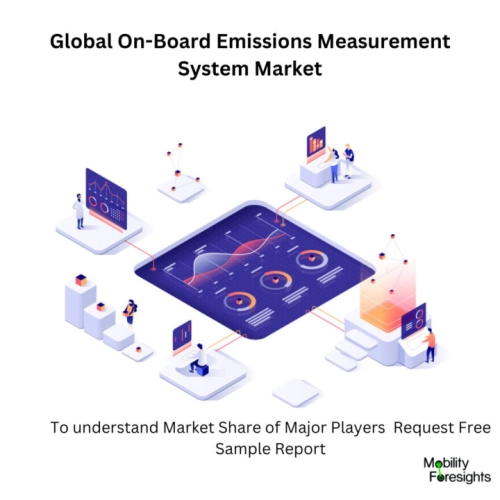
- Get in Touch with Us

Last Updated: Apr 25, 2025 | Study Period: 2024-2030
It estimates mass emissions and monitors emissions concentrations (CO, CO2, THC, NOx, NO2), particulate matter, air-to-fuel ratio, exhaust flow rate, GPS data, and ambient factors (atmospheric temperature, humidity, and pressure).
The practice of measuring the amount of pollutants, in a gaseous or particle form, released into the air from a particular source, such as an industrial activity, is known as emissions measurement.
In an engine dynamometer test cycle, emissions are commonly stated in terms of grams of pollutant per kilowatt-hour (kWh) or grams per horsepower-hour (g/bhp-hr) of mechanical energy produced by the engine.
Cycles can be classified as steady state cycles or transient cycles depending on the nature of speed and load fluctuations.By measuring emissions, you may get ready for new rules that might otherwise have a severe financial impact on your business and its supply chain. By conducting on-the-road tests in 1995, realistic pollution and fuel consumption rates for gasoline-powered vehicles were established.
On-board measuring system that was designed internally and validated was employed. Measurements were made on six three-way catalyst (TWC) autos and one carburetted non-catalyst car. Analysis was done on how CO, HC, and NOx emissions and fuel consumption were affected by road type, driving style, and cold starts.
The emissions of TWC vehicles were determined to be at least 70% lower in actual traffic scenarios than those of the non-catalyst vehicle. Emissions for TWC vehicles dropped in all types of traffic, including urban, rural, and interstate.
Motorway traffic produced the highest NOx emissions without a catalyst. Aggressive driving resulted in emissions that were up to four times higher than during regular driving. Unless there are NOx, drive slowly

TheGlobal On-board Emissions Measurement System marketaccounted for $XX Billion in 2022 and is anticipated to reach $XX Billion by 2030, registering a CAGR of XX% from 2023 to 2030.
For certification and engine/vehicle R&D, HORIBA has created a variety of emission test programmes, such as the Test Automation SystemSTARS, which simulates a real-world driving scenario in the test cell. Data from a driving recorder and the OBS-ONE combination are needed for this simulation. The most recent Portable Emissions Measurement System, called OBS-ONE, is made for engine/vehicle certification on real roads.
Measurements include emissions concentrations (CO, CO2, THC, NOx, NO2), particulate matter, exhaust flow rate, GPS data, and environmental factors (atmospheric temperature, humidity, and pressure). Mass emissions are also calculated.
The highly adjustable, intelligent operating platform "HORIBA ONE PLATFORM" that integrates data from other OBS-ONE series products is a feature of OBS-ONE.
| Sl no | Topic |
| 1 | Market Segmentation |
| 2 | Scope of the report |
| 3 | Abbreviations |
| 4 | Research Methodology |
| 5 | Executive Summary |
| 6 | Introduction |
| 7 | Insights from Industry stakeholders |
| 8 | Cost breakdown of Product by sub-components and average profit margin |
| 9 | Disruptive innovation in the Industry |
| 10 | Technology trends in the Industry |
| 11 | Consumer trends in the industry |
| 12 | Recent Production Milestones |
| 13 | Component Manufacturing in US, EU and China |
| 14 | COVID-19 impact on overall market |
| 15 | COVID-19 impact on Production of components |
| 16 | COVID-19 impact on Point of sale |
| 17 | Market Segmentation, Dynamics and Forecast by Geography, 2024-2030 |
| 18 | Market Segmentation, Dynamics and Forecast by Product Type, 2024-2030 |
| 19 | Market Segmentation, Dynamics and Forecast by Application, 2024-2030 |
| 20 | Market Segmentation, Dynamics and Forecast by End use, 2024-2030 |
| 21 | Product installation rate by OEM, 2023 |
| 22 | Incline/Decline in Average B-2-B selling price in past 5 years |
| 23 | Competition from substitute products |
| 24 | Gross margin and average profitability of suppliers |
| 25 | New product development in past 12 months |
| 26 | M&A in past 12 months |
| 27 | Growth strategy of leading players |
| 28 | Market share of vendors, 2023 |
| 29 | Company Profiles |
| 30 | Unmet needs and opportunity for new suppliers |
| 31 | Conclusion |
| 32 | Appendix |